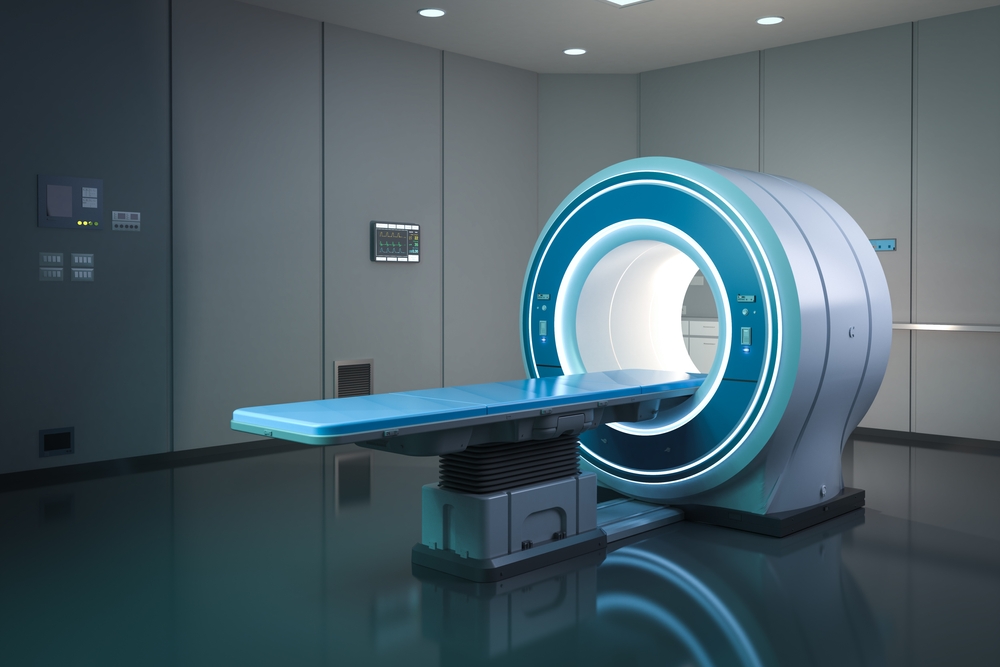
While deep learning architectures like neural networks dominate today’s AI headlines, classical machine learning (ML) algorithms remain highly relevant and powerful in prostate MRI lesion classification. These foundational models—such as Support Vector Machines (SVMs), Random Forests, and XGBoost—have proven remarkably effective, especially when applied to smaller, curated datasets and integrated into interpretable radiomic-based workflows. They form the backbone of many early and still widely used prostate cancer AI systems, delivering tangible clinical value.
Why Classical Machine Learning Still Matters in Prostate MRI
Before the rise of complex neural networks, classical machine learning models pioneered data-driven diagnostics in medical imaging. Their enduring value comes from a combination of proven performance, efficiency, and transparency, making them a cornerstone of modern AI-assisted radiology.
The foundation of data-driven lesion classification
Classical algorithms were the first to demonstrate that computers could learn to distinguish between malignant and benign tissue from quantitative imaging data. By training on sets of prostate MRI scans with known biopsy outcomes, researchers used these models to identify subtle patterns that were difficult for the human eye to discern consistently. This work laid the essential groundwork for today’s more advanced AI, proving that an algorithmic approach to lesion classification was not just possible but clinically beneficial.
Where traditional ML fits in the AI landscape
Traditional ML finds its sweet spot in specific clinical and research scenarios. It is often the preferable choice when working with smaller, highly curated datasets, which are common in specialized medical research. Because these models are less computationally demanding than deep learning, they can be developed and deployed with fewer resources. Most importantly, their operational logic is more transparent, providing a clear link between input features and output predictions. This interpretability is crucial for building clinical trust and understanding why the model makes a particular classification.
How radiomic features enable ML-based classification
Classical machine learning models do not analyze raw image pixels directly. Instead, they rely on “radiomics”—the process of extracting a large number of quantitative features from medical images. These features describe characteristics of a lesion, such as its shape, size, texture, and signal intensity patterns. By converting a complex image into a structured set of numerical data, radiomics makes the lesion’s properties understandable to algorithms like SVMs and Random Forests.
Overview of Common Classical ML Algorithms in Prostate MRI
Several classical machine learning algorithms have been successfully applied to prostate MRI, each with unique strengths for classifying lesions.
Support Vector Machines (SVMs)
Support Vector Machines operate by finding the optimal boundary, or “hyperplane,” that best separates different classes of data. In prostate MRI, an SVM learns to draw a line in a high-dimensional space of radiomic features that maximally divides clinically significant cancer from benign tissue or low-grade disease. Their strength lies in their robustness when dealing with high-dimensional radiomic datasets, where the number of features can be very large. However, SVMs have limitations; their performance is sensitive to the choice of the “kernel” function used to map the data, and they require careful feature scaling and normalization to function correctly.
Random Forests (RF)
Random Forest is an ensemble learning method that builds a multitude of decision trees during training. To make a prediction, it aggregates the “votes” from all the individual trees. This approach offers several benefits for prostate MRI analysis. It generally achieves high accuracy, is less prone to overfitting than a single decision tree, and can provide “feature importance” metrics. These metrics rank which radiomic features were most influential in the classification, offering valuable insight. A limitation is that Random Forests can be less effective on very small datasets or when features are highly correlated with one another.
XGBoost (Extreme Gradient Boosting)
XGBoost is a more modern and powerful implementation of gradient boosting, another ensemble technique. It builds decision trees sequentially, with each new tree correcting the errors of the previous one. This method has become popular in medical imaging AI for its exceptional speed, high performance, and the fine-tuned control it offers through numerous parameters. Its ability to generalize well to new data makes it a strong contender for clinical applications. The main challenges are its complexity—it has many hyperparameters that require expert tuning—and the risk of overfitting if the model is not properly regularized.
Other algorithms used historically
Beyond the three main models, other classical algorithms have served as important baselines in prostate cancer AI research. K-Nearest Neighbors (k-NN) classifies a lesion based on the majority class of its “neighbors” in the feature space. Logistic Regression provides a probabilistic output for a binary classification (e.g., cancer vs. no cancer). Naive Bayes, a simple probabilistic classifier, has also been used, though it often serves more as a benchmark to measure the performance of more sophisticated models.
Building a Classical ML Pipeline for MRI Lesion Classification
Developing a reliable classical machine learning model for prostate lesion classification involves a structured, multi-step pipeline.
Step 1 — Feature extraction and preprocessing
The process begins by extracting radiomic features from delineated regions of interest on the prostate MRI. These features are then preprocessed to ensure they are on a comparable scale, which typically involves standardization or normalization. A crucial part of this stage is feature selection, where redundant or irrelevant features are removed to improve model performance and reduce the risk of overfitting.
Step 2 — Model training and cross-validation
Once the feature set is prepared, the data is split into training and testing sets. It’s important to use stratified sampling to ensure that the proportion of positive and negative cases is consistent across the splits. The model is then trained on the training data. To ensure the model is robust and can generalize to unseen data, developers use k-fold cross-validation. This technique involves repeatedly training and testing the model on different subsets of the data.
Step 3 — Model testing and interpretation
After training, the model’s performance is evaluated on the held-out testing set. Key metrics are used to measure its diagnostic accuracy, including the Area Under the Curve (AUC), sensitivity (true positive rate), and specificity (true negative rate). A confusion matrix is also generated to visualize correct and incorrect classifications.
Comparing Classical ML vs Deep Learning Approaches
Choosing between classical ML and deep learning involves a trade-off between data needs, interpretability, and performance.
Data requirements and scalability
The most significant difference lies in data requirements. Classical ML models can perform well with hundreds or a few thousand annotated data points, which is often the reality for specialized clinical studies. Deep learning models, on the other hand, are data-hungry and typically require many thousands or even millions of examples to learn effectively without overfitting. This makes classical ML a more practical starting point for many institutions.
Interpretability and clinical transparency
Classical ML models offer a distinct advantage in interpretability. Because they rely on pre-defined radiomic features, it is possible to identify which features (e.g., texture irregularity, lesion compactness) are driving the model’s predictions. This transparency helps clinicians understand the “why” behind an AI’s classification. Deep learning models are often considered “black boxes” because their internal decision-making processes are incredibly complex and not easily linked to human-understandable concepts.
Performance trade-offs in real-world settings
In terms of raw accuracy, state-of-the-art deep learning models often achieve slightly higher performance than classical ML when trained on massive datasets. However, in real-world clinical settings with limited or heterogeneous data, a well-tuned classical model built on a robust radiomic pipeline can perform just as well or even better. The choice depends on the specific problem, the available data, and the importance of model explainability for clinical adoption.
Clinical Relevance of Classical ML Models
Classical machine learning algorithms are not just academic concepts; they are integral components of many AI tools used in clinics today.
Radiologist-assistive AI tools using classical ML
Many early and current FDA-cleared AI software solutions for prostate MRI were built using classical machine learning algorithms. These systems provide radiologists with a valuable “second look,” highlighting suspicious lesions and providing quantitative risk scores based on radiomic analysis. Their proven track record and transparent nature have been instrumental in gaining initial clinical acceptance for AI in radiology.
When classical ML outperforms deep learning
There are specific situations where classical ML can be more effective than deep learning. In low-data environments, such as a single hospital’s dataset or research on rare subtypes of cancer, classical models are less likely to overfit. Furthermore, when a clinical workflow is built around specific, well-understood handcrafted radiomic features, classical ML provides a direct and interpretable way to leverage that domain knowledge.
Integration into PACS and hospital workflows
A major practical advantage of classical ML models is their efficiency. They require significantly less computational power for training and inference compared to deep learning models. This makes them easier and cheaper to deploy on standard hospital IT infrastructure and integrate smoothly into existing PACS.
Challenges and Limitations
Despite their strengths, classical ML models come with their own set of challenges that must be addressed for robust clinical deployment.
Feature dependency and overfitting
These models are entirely dependent on the quality of the input radiomic features. If the features are poorly chosen or highly correlated, the model may overfit the training data and fail to generalize. Careful feature selection and regularization techniques are essential to mitigate this risk and build a model that performs reliably on new patient scans.
Lack of transferability across scanners
A model trained on MRI data from one specific scanner or institution may not perform well on data from another. This “domain shift” is a well-known problem in medical imaging AI. Classical models often need to be retrained or validated on local data, or advanced techniques must be used to harmonize the data.
Limited adaptability to new imaging techniques
The fixed nature of radiomic feature sets can make it difficult for classical ML models to adapt to new imaging sequences or modalities. While deep learning models can learn features from novel data automatically, classical models may require a complete redesign of the feature extraction pipeline to incorporate information from techniques like advanced diffusion MRI or spectroscopy.
Future of Classical Machine Learning in MRI Lesion Classification
The story of classical ML is far from over. Its future lies in hybridization, improved explainability, and its role in building trust.
Hybrid and ensemble models
One of the most promising directions is the creation of hybrid models that combine the strengths of both classical and deep learning. For example, a deep learning model might be used to automatically segment a lesion, after which a classical ML model classifies it based on radiomic features.
Feature explainability and radiomics interpretability
New research is focused on making classical ML models even more transparent. By combining feature importance metrics with modern explainability tools (like SHAP or LIME), developers can create “glass-box” models that not only make a prediction but also explain the radiomic evidence behind it.
Role in regulatory and validation frameworks
The inherent transparency of classical ML models can be an advantage in the regulatory approval process. Simpler, more interpretable models are easier to validate, and their failure modes are more predictable. This makes them a reliable choice for developers seeking a clear and efficient path to regulatory clearance and subsequent clinical adoption.
Conclusion
Classical machine learning algorithms like SVM, Random Forest, and XGBoost remain powerful, explainable, and clinically valuable tools for prostate MRI lesion classification. When paired with high-quality radiomic features and subjected to rigorous validation, these models provide a solid foundation for building reproducible and trustworthy AI that enhances diagnostic confidence. As the field of medical AI progresses, these proven methods will continue to play a vital role, serving as robust components in hybrid systems and setting the standard for transparent, clinician-centric solutions that improve patient outcomes.

